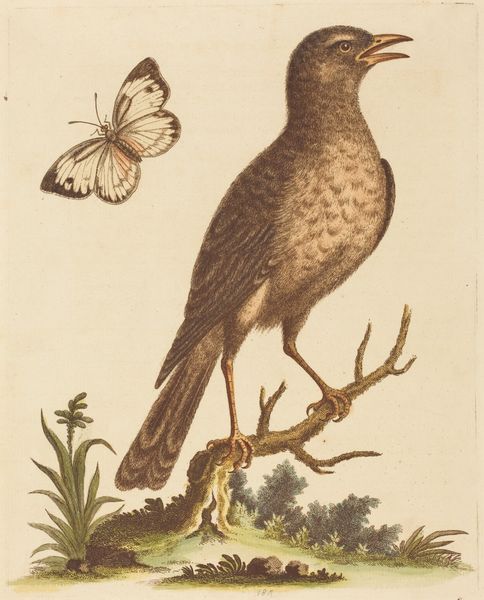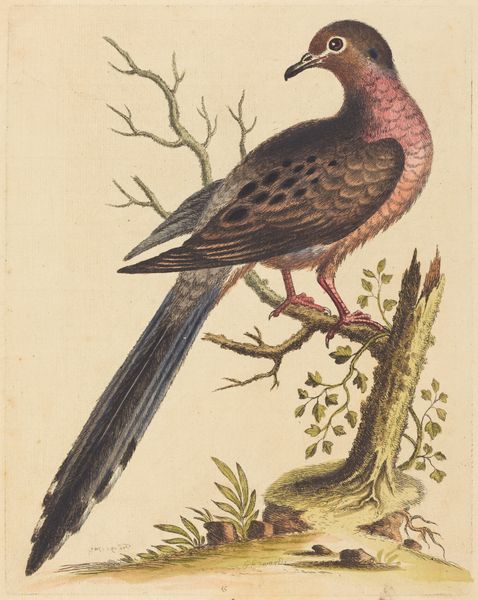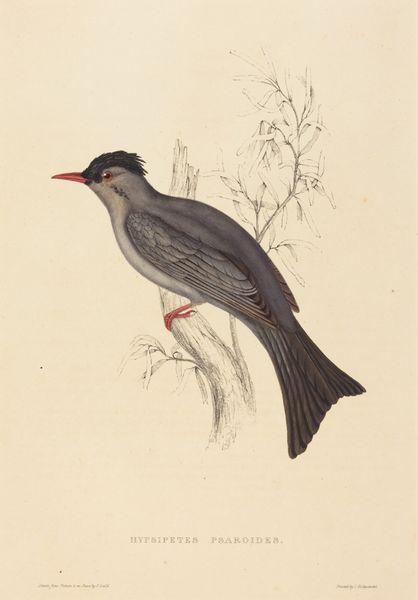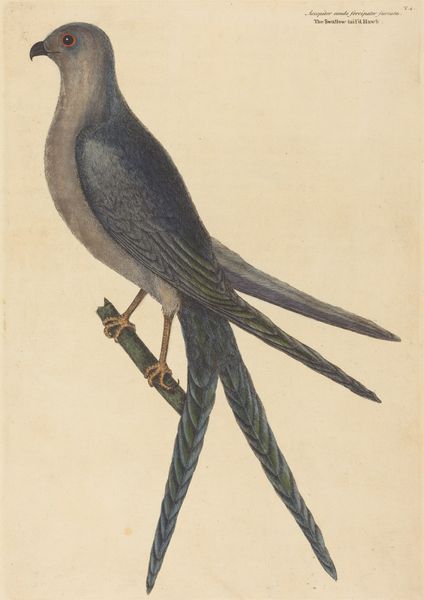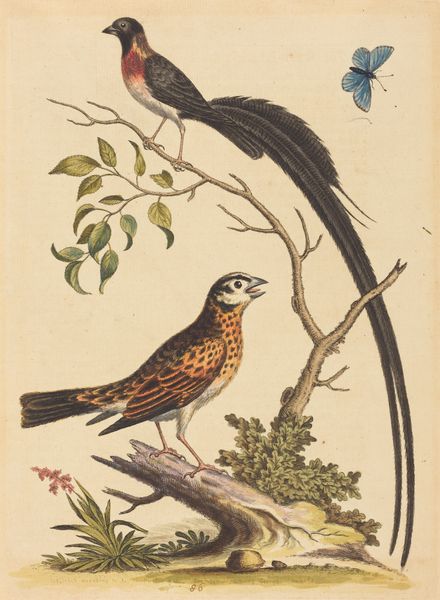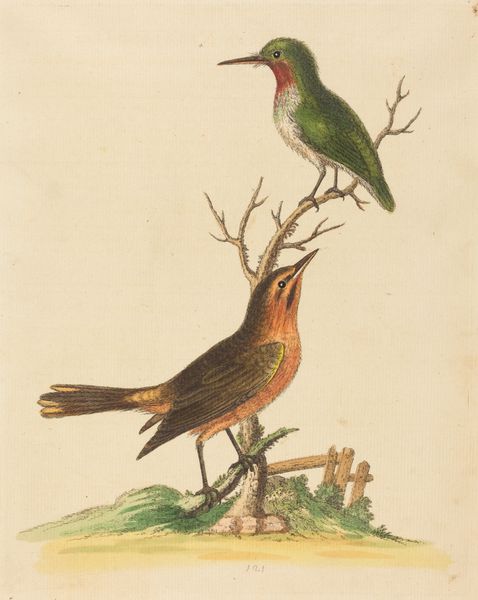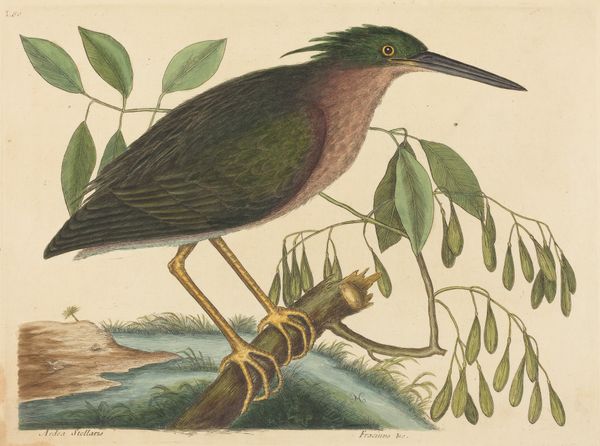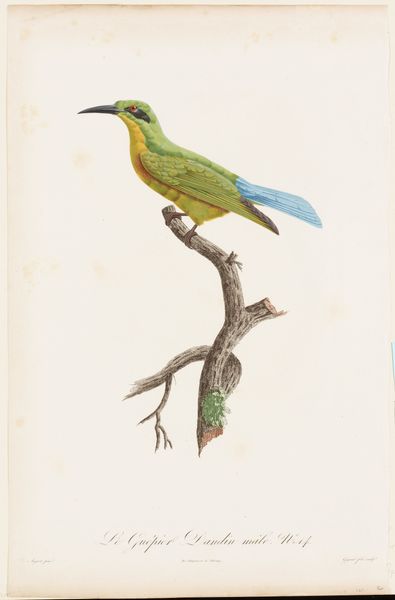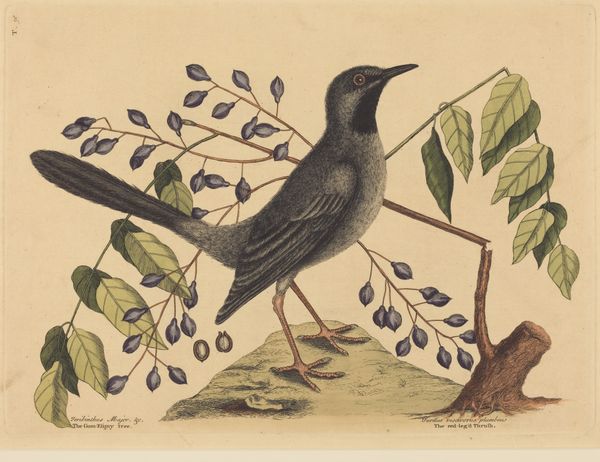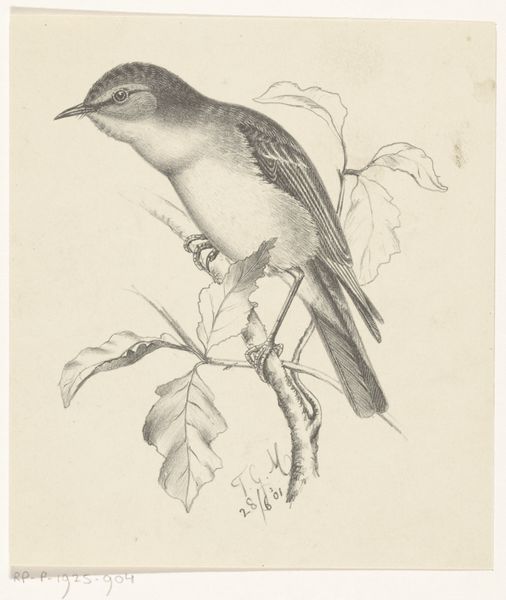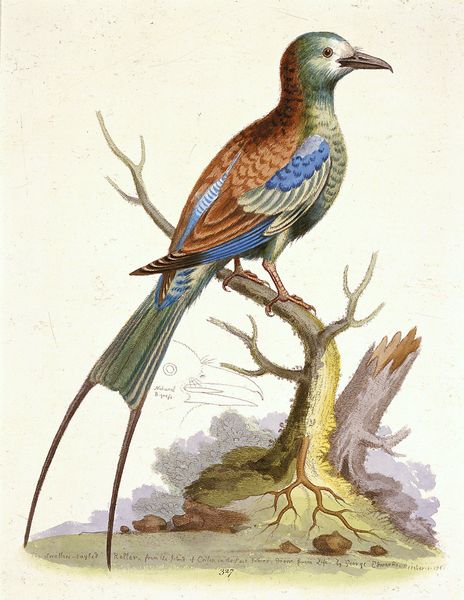
Dimensions: plate: 23.9 x 18.9 cm (9 7/16 x 7 7/16 in.) sheet: 27.9 x 22.1 cm (11 x 8 11/16 in.)
Copyright: National Gallery of Art: CC0 1.0
Editor: Here we have George Edwards' "The Black and White Crested Bird of Paradise," possibly from 1743, created with colored pencil. I’m struck by how detailed the bird's feathers are; the artist really captured the texture. How do you interpret the work’s visual elements? Curator: Focusing on the intrinsic properties of the artwork, we see a clear emphasis on line and form. Note the careful delineation of each feather, creating a layered effect that leads the eye from the head to the extremely long tail. Consider the structural relationship between the static pose of the central bird and the hovering second bird to the right, connected by mere thin lines. The visual balance achieved despite this asymmetry creates a curious tension. Editor: So you're saying the relationship between the lines creates tension. I also noticed the limited color palette focuses attention on form, and the textured and patterned feathers, where black blends into hues of white, grey, and brown. It seems carefully constructed. Curator: Precisely. The color is, in essence, a structural element. The near monochrome forces us to dissect the relationship between positive and negative space. Note how the curves of the tree limb mimic the angle of the tail. Are we, therefore, seeing two birds, or an image of a bird mirrored across time, as it evolves from potential to actuality? Editor: I hadn’t considered that interpretation. The structural elements and their relations reveal new readings to me. Thanks for helping me see more clearly the impact of Edwards’ design choices. Curator: The pleasure was all mine. Examining artworks through the lens of pure form invites us to a closer and much richer understanding of artistic expression.
Comments
No comments
Be the first to comment and join the conversation on the ultimate creative platform.
